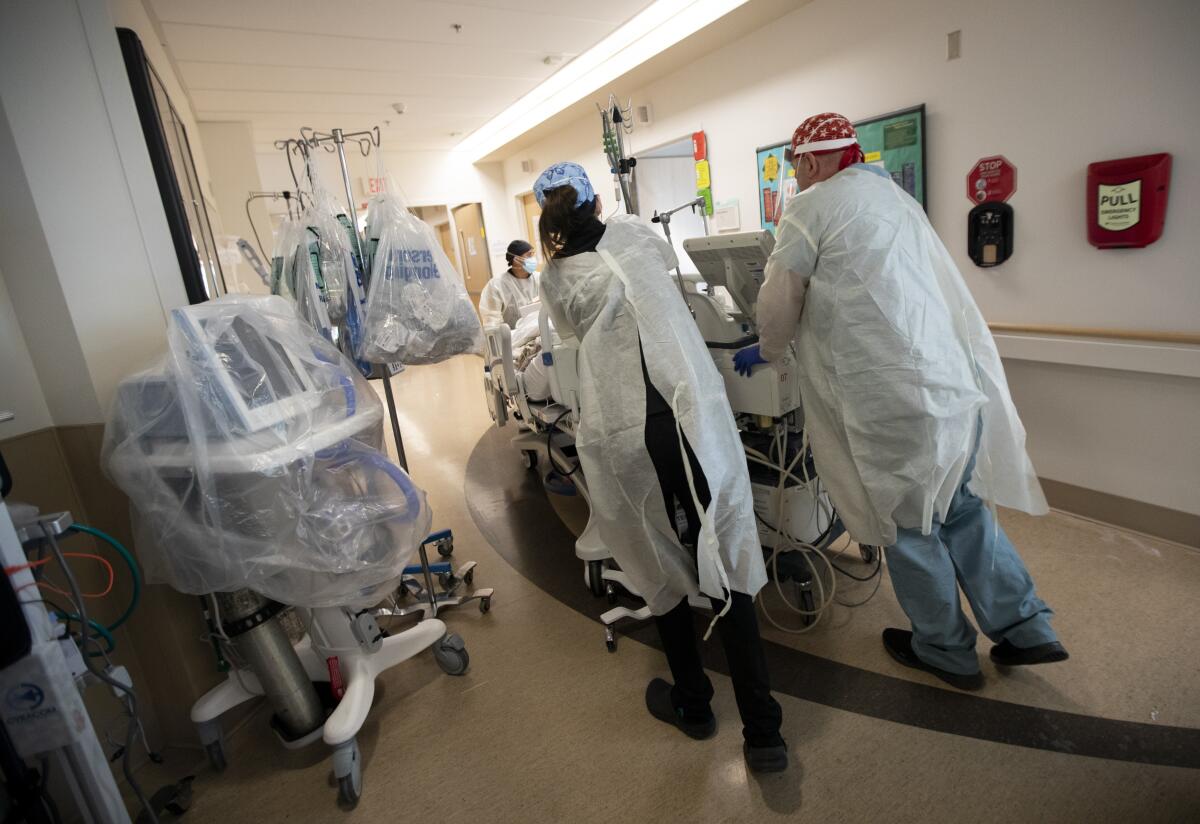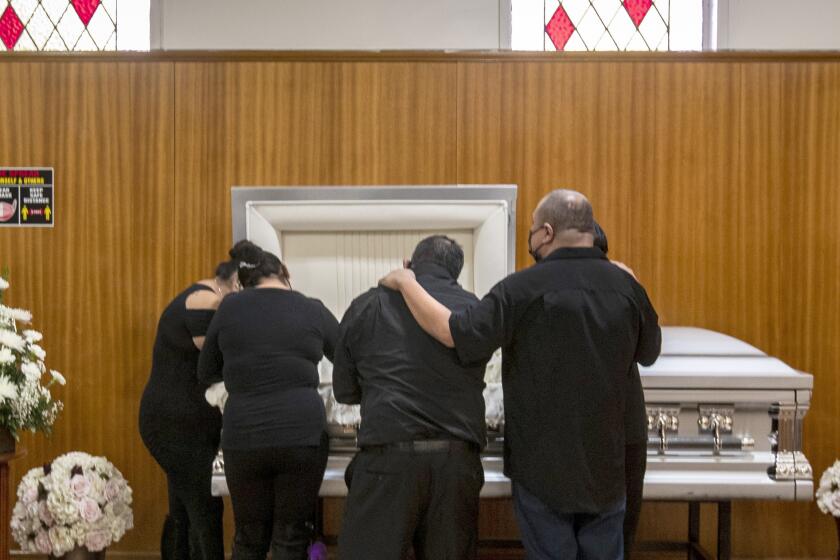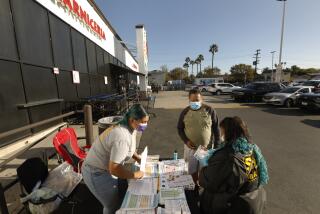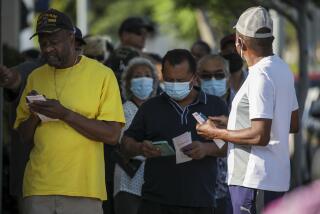California sees record-breaking COVID-19 deaths, a lagging indicator of winter surge

- Share via
California is continuing to see record-breaking deaths from COVID-19, a lagging indicator of the winter surge that is coming even as overall coronavirus cases and hospitalizations have flattened and started to slightly decline.
The state broke the record Thursday for most COVID-19 deaths in a single day: 736, surpassing the mark set on Jan. 15, when 700 deaths were reported. California is still averaging about 500 deaths a day over the past week, one of the worst such figures of the pandemic, but slightly lower than a week ago, when the state was averaging 534 deaths a day.
Los Angeles County recorded 246 deaths on Thursday; the average daily number of deaths has been at 200 or above for nearly two weeks. Because it takes weeks for infections to result in hospitalizations, and then more weeks before hospitalizations result in deaths, it is expected that deaths will continue to be high even as hospitalizations begin to decline.
Of nearly 36,000 cumulative COVID-19 deaths statewide, more than 10,000 have been reported since New Year’s Eve, including more than 4,500 in L.A. County. The state’s most populous county, which has tallied more than 14,600 deaths, accounts for roughly 41% of California’s cumulative COVID-19 deaths, despite being home to only a quarter of the state’s population.
Over the past 14 days, California has reported 18 COVID-19 deaths per 100,000 residents, the ninth highest among all states, Times data show. Arizona has recorded the highest rate during that time, 30 deaths per 100,000 residents; the other states with worse rates than California were Alabama, Pennsylvania, Mississippi, Nevada, West Virginia, Kansas and Arkansas.
More than 4,000 of Los Angeles County’s 14,000-plus COVID-19 deaths have been reported since New Year’s Day.
California’s woes come amid a national surge in deaths. More than 4,400 COVID-19 deaths were reported nationally on Wednesday, a single-day record, according to the COVID Tracking Project. More than 404,000 Americans have died in the pandemic, and it’s possible the cumulative national death toll could hit between 465,000 to 508,000 before Valentine’s Day, according to the U.S. Centers for Disease Control and Prevention.
The loss of life from COVID has been so great the National Guard has been called in L.A. County to help overloaded hospital morgues by taking bodies to the county coroner’s office for storage until funeral homes and mortuaries can process the backlog. Air quality officials have suspended monthly limits on the number of cremations to avoid a public health crisis. As of Friday, more than 2,700 bodies were being stored at hospitals and coroner’s offices.
The current death rate is “more than double that of pre-pandemic years, leading to hospitals, funeral homes and crematoriums exceeding capacity, without the ability to process the backlog,” the South Coast Air Quality Management District said this week.
During the most severe part of the first waves of the pandemic, L.A. County’s daily COVID-19 death toll peaked at 50 deaths a day. This wave has been markedly worse, with the average daily death toll peaking at 241 for the seven-day period that ended on Jan. 14.
The percentage of hospitalized COVID-19 patients in L.A. County who have died has doubled in recent months.
That’s according to an analysis released Wednesday by the county’s Department of Health Services, which found the share of people who died of the disease while hospitalized increased from about 1 in 8 people in September and October to roughly 1 in 4 since early November.
Dr. Roger Lewis, director of COVID-19 hospital demand modeling for the L.A. County Department of Health Services, said the increased percentage of deaths is a result of hospitals being so crowded that only the sickest patients are being admitted. Because hospitalized COVID-19 patients are now uniformly more severely ill, a greater percentage of them are dying.
“During the current surge, while hospitals are critically overcrowded … clinicians are being extremely judicious in their decisions to hospitalize patients,” Lewis said.
“The current data suggest that only patients who are quite ill and clearly require acute hospitalization are being admitted. And it is likely that a greater fraction of patients are being sent home with instructions to return to the hospital should their illness worsen,” Lewis said.
In September and October, the resources required on average for each COVID-19 patient in L.A. County were 6.93 days in the hospital, 2.09 days in the ICU and 1.16 days on mechanical ventilation. But since the beginning of November, the resources needed for each hospitalized patient grew, and now average 9.49 days in the hospital, 2.38 days in the ICU and 1.89 days on mechanical ventilation.
There is hope that pandemic trends are trending in the right direction. Since Jan. 10, the average daily number of coronavirus cases in California has fallen from nearly 45,000 to about 31,000 on Thursday, although that number may be artificially low due to a reduction in testing capacity as sites are converted to vaccination locations or due to lags in reporting over the three-day Martin Luther King Jr. holiday weekend.
Across California, COVID hospitalizations peaked on Jan. 6 at nearly 22,000 people in the hospital with the coronavirus; on Wednesday, that number had fallen to about 19,500.
Times staff writers Paul Duginski and Sean Greene contributed to this report.
More to Read
Sign up for Essential California
The most important California stories and recommendations in your inbox every morning.
You may occasionally receive promotional content from the Los Angeles Times.













